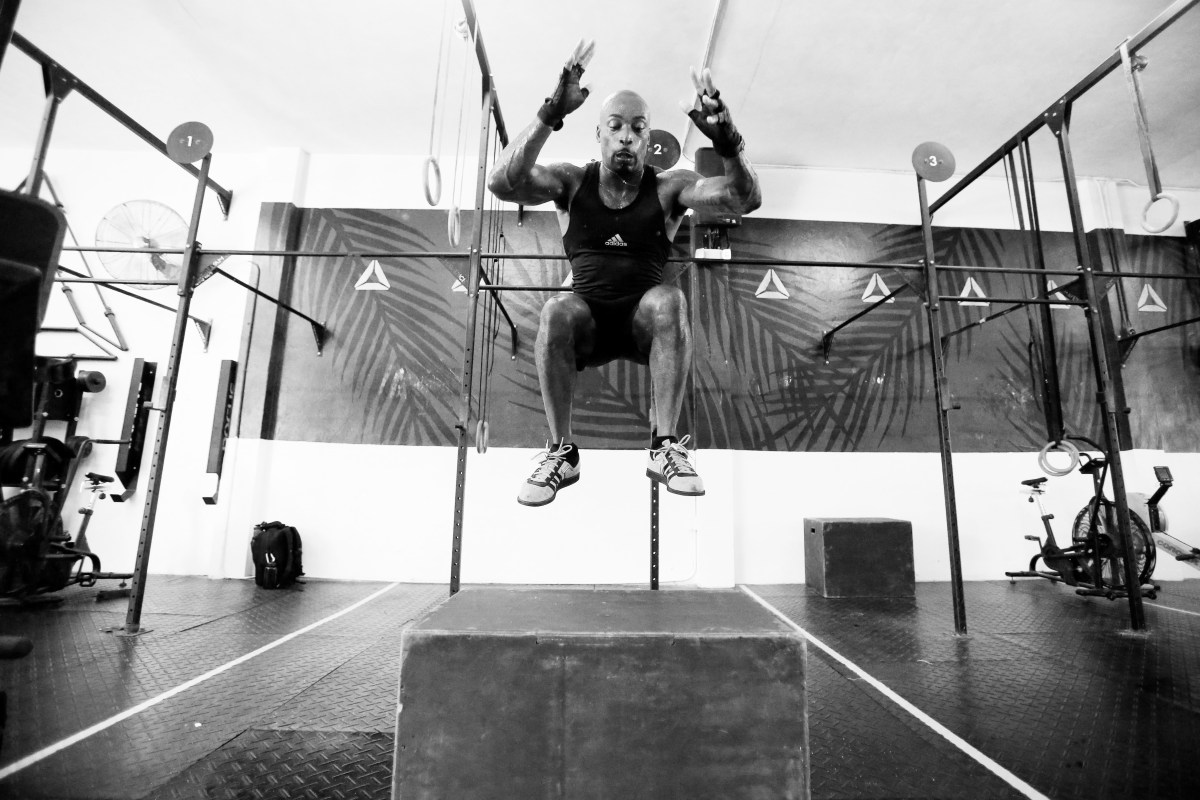Our take: the most intimidating section of the gym floor is also the most fun.
The turfed area with sandbags, tires, maces and battle ropes might feel reserved for your club’s peak performers. We understand. When they’re on the louder (grunt-ier) side, it seems like they’re literally gate-keeping this equipment, too. You might as well stick to what you know.
But you should feel entitled to get up there and try out unconventional training tools for yourself. They’re easier to use than they appear, and can freshen up a weekly regimen. One of our favorite bits of equipment? The box jump, a plyometric platform intended to help athletes build strength, agility and endurance.
How to Stretch Your Most Neglected Core Muscle
The psoas holds too much tension. This move will help.What Are Box Jumps?
They’re precisely what they sound like: leaps onto a box or raised platform.
As very few of us are leaping with any regularity during the week, this exercise is guaranteed to raise your heart rate. It’s a high-intensity calorie-burner, but it’s also full-body move, as it targets your legs, glutes and core.
Some added benefits: box jumps are a plyometric exercise, which means they’re high-impact and power-based. Training in this style recruits multiple muscle groups and helps develop explosiveness. It also turbocharges your agility, helping you refine your balance and reaction time.
The last point is especially useful if you’re an athlete. Basketball players will find it easier to leap up for rebounds, tennis players can hone their quick shifts in direction and martial artists can summon more oomph for a kick. In fact, research has found that the higher boxers can jump, the harder they can punch. Power in your lower half can go a long way.
Some Dos and Don’ts
Aside from potential gym floor intimidation, another reason people avoid box jumps is fear of injury. It’s a credible concern. If you’re not careful, or overtrain at the outset, you could overextend your knee. So before you start leaping, remember these four rules:
- Do warm up properly.
- Do land softly to absorb the impact.
- Don’t use a platform that’s too high at first. Start low and gradually increase the height.
- Don’t lock your knees upon landing. Keep them slightly bent to protect the joints.
Try This 15-Minute HIIT Workout
You probably don’t want an entire workout dedicated to box jumps. They work better as a complement to other plyometric or calisthenic moves. Here’s a 15-minute circuit that includes the exercise, which can be completed as many times as you like (though we’ve specified four run-throughs):
- Warm-up: Three minutes of light jogging or jumping jacks.
- Box Jumps: Perform 10 reps.
- Burpees: Perform 10 reps.
- Mountain Climbers: Perform 10 reps each leg.
- Rest: 30 seconds.
- Repeat: Four rounds total.
Once you’ve mastered the basics, consider some advanced twists: single-leg box jumps (self-explanatory, but get a smaller box for this one), and box jump overs, in which you jump onto the box and then jump over it, landing on the other side. If you’re really looking to get in the lab on plyometric jumping, check out depth jumps and tuck jumps.
The Charge will help you move better, think clearer and stay in the game longer. Subscribe to our wellness newsletter today.




















